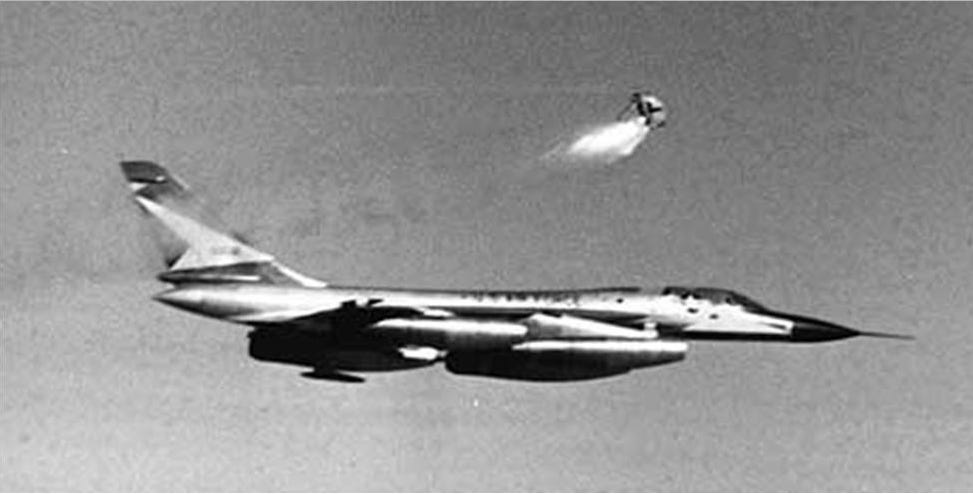We are held together by stories — some beautiful, some imparting ancient wisdom, even some that leave you shaking your head wondering about the strange, wonderful world we live in. All of them threads in the tapestry of a place.
Regular readers of the Little Dipper will know that from time to time these pages offer tales that seem a little, I don’t know, off kilter, not quite square with the way we usually see ourselves or the world around us. There are so many wild and wonderful tales, I’ve begun this on-going occasional series I like to call “Off Kilter.” To read the first volume of “Off Kilter” click below:
Or, read on for two more tales of the strange but true variety offered for your entertainment, wonderment, or simply to throw your own day a little “Off Kilter.”
SUPERSONIC BEARS
(A bear nicknamed “Yogi” awaiting the chance to make aviation history - photo by USAF)
Seeing a bear in the Apostle Islands is a gift, a rare and wonderful moment and a glimpse into the wild heart of these islands. Usually, it happens quickly - a bear silently appears out of the shadows or in the tangle of a blueberry bog, huffs once with a sound like wind ruffling in a sail, and is gone.
I’ve seen bears on the beach, I’ve seen them in the shadowy forest, and I’ve seen them swimming in the lake. I’ve yet to see one parachuting however, as in this next story but even though this didn’t happen in the Islands, I bet you will be thinking about it the next time you see bear tracks in the mud. I know I will.

According to “This Day in Aviation History” and the Air Force Historical Society, a black bear by the name of “Yogi” became the first living creature to experience the joys of being ejected from a supersonic aircraft. It was March 21,1962 and the United States Air Force had developed a new aircraft known as the Convair B-58A Hustler, capable of speeds reaching Mach Two. It was sleek. It was fast. One question, however remained unanswered: was it safe? No pilot had ever safely ejected at such speeds and no one knew exactly what such extreme g-forces would do to the human body.
Enter Yogi.
On that day in March 1962, a black bear (a creature whose internal organs and musculature mimic human anatomy) was sedated, fitted with monitors, strapped into an ejection pod aboard a human-piloted B-58 traveling at 870 miles an hour. The creature was then ejected at 35,000 feet over Edwards Air Force Base in California. The pod with its own rocket booster rose 225 feet above the plane, deployed its parachute and landed safely among the sagebrush and cactus of the desert below some 7 minutes and 49 seconds later complete with a living although likely quite astonished bear.
The B-58 Hustler would later be scrapped by the Air Force, still Yogi (and another 5 bears and one chimpanzee) helped make ejection seat technology safer saving the lives of countless pilots all across the world although there has never been a verified report of any parachuting bears in the Apostle Islands, yet.
NAVAL BOMBARDMENT
As if supersonic bears were not enough to worry about, our second “Off Kilter” tale has to do with a naval bombardment that took place off the northern end of Devils Island some years ago.
The following is taken directly from the Incident Reports of the National Park Service filed by a ranger with both a sense of duty and a sense of humor:
Friday, August 11, 1995
95-515 - Apostle Islands (Wisconsin) - "Shooting" Incident
On August 5th, volunteer lighthouse keepers on Devils Island reported that men on a sailboat anchored offshore were shooting at them with a red and white rifle. Although forced to take cover, the volunteers were able to provide a full description of the vessel, including its name. Rangers intercepted the boat, with backup assistance from the Coast Guard, and discovered that the rifle was in fact a homemade "potato cannon" - a device constructed from PVC pipe which employs combustible hair spray as a propellant to fire raw potatoes with considerable force to a distance of up to 200 yards. C.P., 40, and P.B., 38, both from Minnesota, admitted firing toward the island and were cited for disorderly conduct. Initial research indicates that this may be the first naval bombardment of a shore installation on the Great Lakes since the War of 1812. [Bob Mackreth, DR, APIS]
Honestly, next time I am seated on the front deck of the Little Dipper drifting quietly and sipping my coffee, I will be trying hard NOT to think of potato bombs and parachuting bears. Still, strange as they are, stories like these are part of the fabric that makes living on this spinning blue-green planet the joyride that it is. It is all a part of the journey.
Next week we will return to more normal fare on the Little Dipper but stay tuned for further adventures of “Off Kilter” some time down the line because while this world is full of beauty and wonder, there is no shortage of strangeness to be found along the way either.
— Jeff Rennicke (all photography by the author unless otherwise noted)







